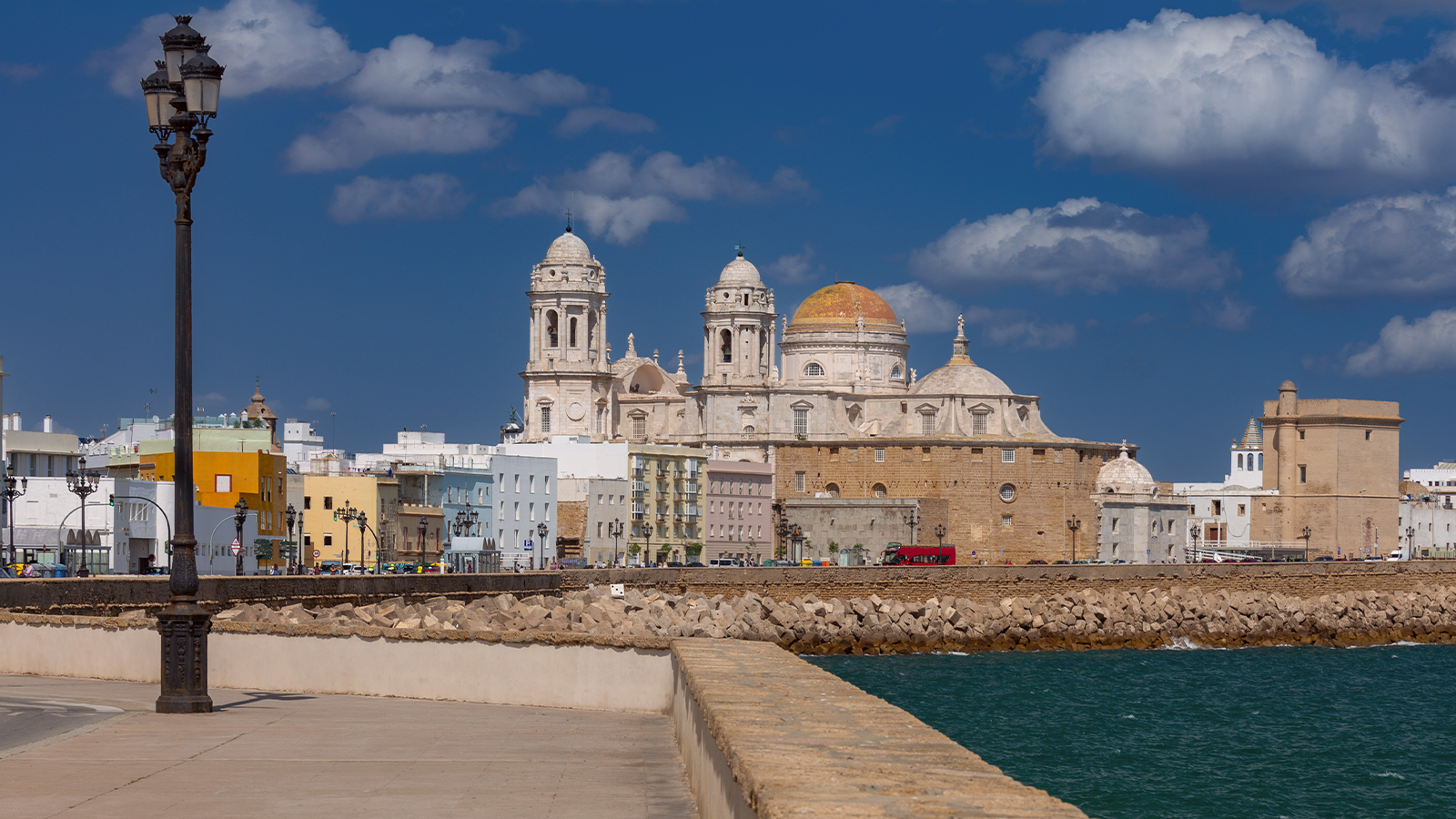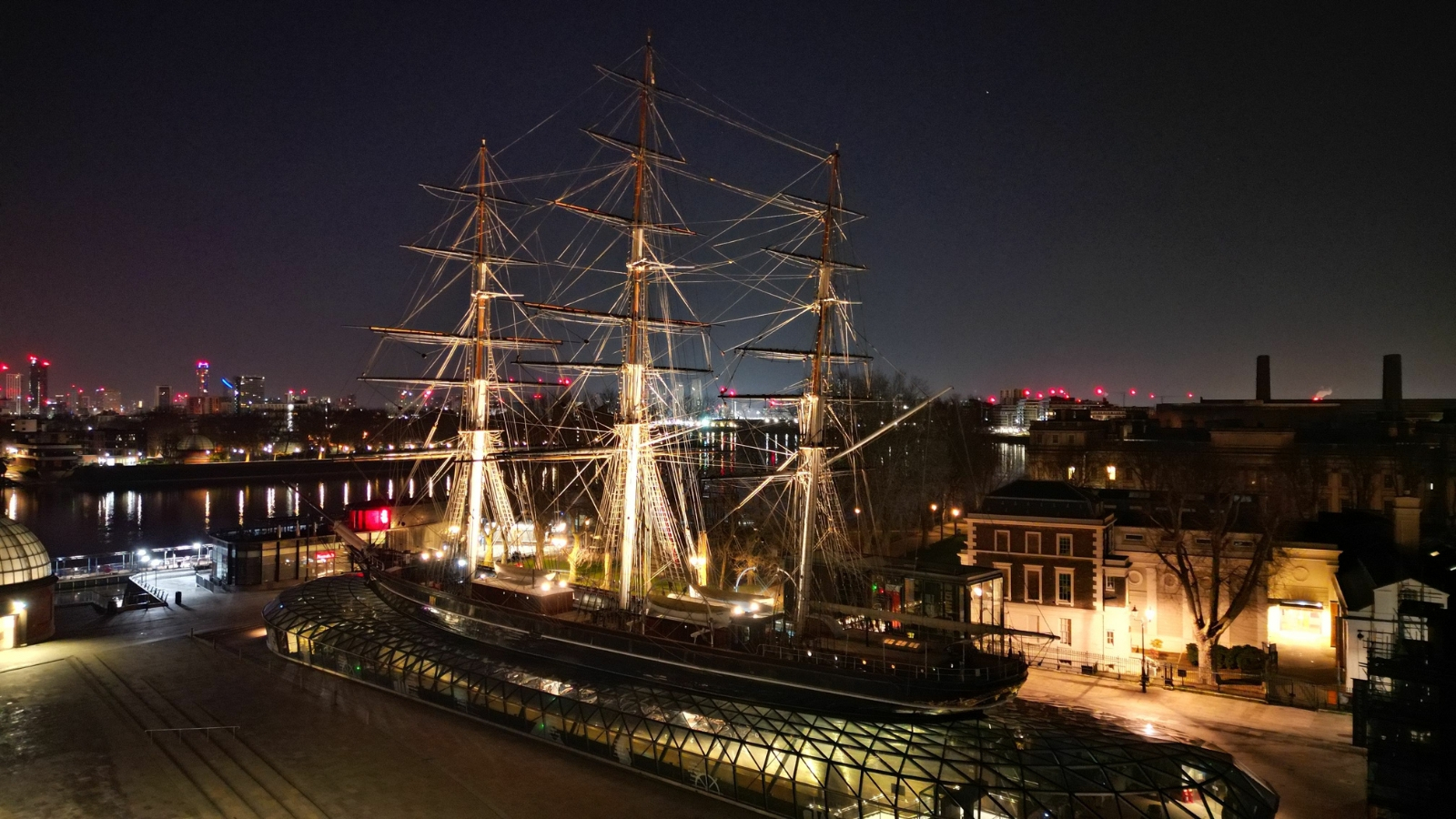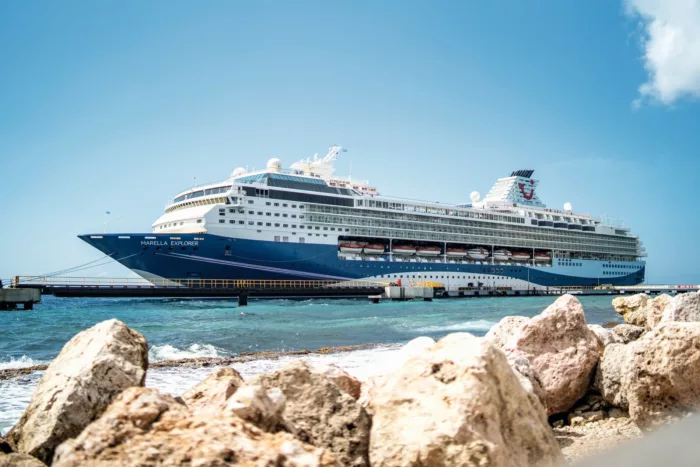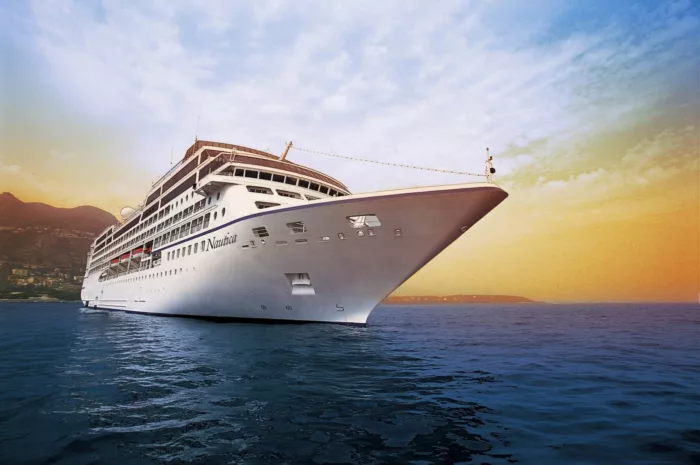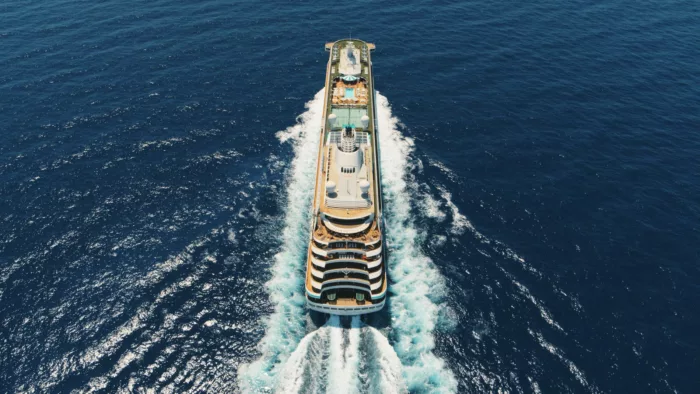
Terror on the Britannic: How cruising bore the brunt of 1970s cinematic change
The frenzied downturn of 1970s economics amid rampant social change could be found not just in British cinematic exploits, but also across the UK cruise and shipping industry. Conjoining the two made for a true taste of Britain’s changing tone as a new age brought a harsh new reality reports Calum Brown
The 1970s. Amid society’s flared lust for hot pants and platform shoes, Britain was undergoing a gritty cultural hangover. Whereas the swinging Sixties birthed a dignified uprising, that decade-long upheaval quickly gave way to hyperinflation and austerity.
In essence, the decade that unleashed David Bowie and Queen upon the nation was also, by and large, miserable.
Free-swaying love and psychedelic innovations had ignited a range of economic and political difficulties, before spilling feverishly into the next decade. The disco era bore the full brunt, and the Western world would never again beat with harmony.
Even the indestructible Cunard felt an impact, having to sell RMS Queen Mary for scrap and dispatching RMS Queen Elizabeth to her doom.
More cruise film goodness
- The Norwegian liners that saved Tom Cruise’s Mission Impossible
- The Norwegian liners that saved Tom Cruise’s Mission: Impossible
- The real Jack and Rose: Titanic’s Isidor and Ida Straus
Cinema also turned away from light-hearted psychedelia and towards stout-hearted reality, holding a mirror to the nation’s anguish. Gone was the cheek of Michael Deeley’s Italian Job (1969) and brain-washed patriotism of Guy Hamilton’s Battle of Britain (1969), replaced with the blatant violence of Get Carter (1871) and the anti-war sentimentality of A Bridge Too Far (1977).
That downbeat sway would permanently root cinema in reality, spinning a need for fantasy and Sci-Fi productions that defied the struggles of contemporary existence and provided an escape.
Say what you want, but Star Wars spearheaded a revolution through the lack of opportunity at home. People's ambitions and hopes transferred towards characters with a fighting chance – such as Hans Solo and Luke Skywalker.

The country’s monochromatic ruling also failed to adapt as the decade progressed towards neon lights and bouffant hair.
Strikes and social instability reduced Great Britain into a welfare state, where industrial tensions, high inflation, mass unemployment, and an assortment of energy crises inflicted untold suffering upon the British people.
Communities were destroyed and, arguably, the country never recovered. The media turned from upbeat nationalism to sharpened satire and crisp voyeurism.
Consequently, both the British film industry and Britain’s shipping were on life support. Following the rowdy yet dignified 'Rule Britannia; motif that birthed Great Britain’s profitable creative industry – from gothic Hammer Horror and James Bond, to The Rolling Stones and The Beatles – the world had moved on.
British cinema was failing hard at the box office. Taxation had driven the superstars onto foreign land. Internal politics within previously-iconic major studios churned out stagnant fayre before dying in the sticky filth of an oppressive 1976 heatwave.
Meanwhile, British shipping faced a period of significant decline, a downturn influenced by the toxicity of economic, technological, and geopolitical factors.
Once a global powerhouse, British shipping struggled as competition intensified, costs soared, and operational inefficiencies became increasingly apparent.
The oil crisis of 1973 practically buried the cruise industry, altering travel trends and pushing the spotlight firmly across to aviation.
The 'Golden Age' of cruising, which had relied on ocean liners to ferry people across the Atlantic, was quickly eclipsed by jet travel, as it became possible for both people and cargo to cross the Atlantic in hours rather than days.
British cruise lines, heavily invested in large ocean liners designed for lengthy voyages rather than leisurely cruises, struggled to adapt to this shift. They could only watch as profits migrated towards companies already reoriented for the emerging Caribbean cruise market.
At the same time, British shipping companies were grappling with high employee costs, often tied to powerful Labour unions resistant to changes in technology and work practices. Dockside strikes and labor disputes were common.
Her Majesty Queen Elizabeth II even declared a state of emergency, adding to the operational inefficiencies that further compromised competitiveness. Combined with economic instability in the UK, where inflation and currency fluctuations undermined profitability, British shipping entered a period of marked decline.

Furthermore, decolonisation reduced demand for British vessels, as former colonies increasingly managed their own shipping needs.
British shipping had lost its competitive edge, as other nations rapidly modernised and adopted streamlined practices that would come to define global shipping in the decades to follow.
Great Britain felt gritty, almost washed out through a suffocating filter of oranges and browns; witnessing an end to cherished institutions. Films set in the UK showcased this insipid mantra.
Gone were the feel-good adventures through alternate realities, where heroes survived impossible situations. Times had changed, and, looking back, nothing exhibits that shift in mood more than cinematic exploits at sea.

The end of an era
Just as cinema juddered through a drastic transformation, the cruise and shipping industries were also changing. The 1970s marked a pivotal shift in both arenas.
Neither ushered the romanticism of preceding decades, heroes no longer ventured forth unscathed, and headlines rarely broadcast a positive narrative. Unless Cunard’s QE2 was under threat, or film crews were badly behaved, the press barely paid attention.
The era’s films reflected this, moving away from the traditionally muted narratives of the 1950s and 1960s, where films such as The Last Voyage and A Night to Remember largely glossed over the gruesome truth of a fate at sea.
If noble characters faced harrowing yet ultimately triumphant challenges, survival was almost guaranteed, ala Robert Stack in the infamous The Last Voyage, where Hollywood purposefully destroyed the grand liner SS Ile de France.
Compare that to Gene Hackman’s demise (spoilers) during 1971’s The Poseidon Adventure, based on the true account of RMS Queen Mary’s battle with a 90-ft rogue wave.
As the champion of the picture, Hackman portrays a priest who guides a small band of survivors through the upturned liner to safety, except – following an almighty internal argument with his faith – Hackman doesn’t survive. Instead, he meets his maker following a hellish drop into burning oil.
The earlier films often glorified resilience and ingenuity in the face of overwhelming odds, allowing audiences to witness brave captains, resourceful passengers, and daring rescues in scenarios rooted in maritime disasters, but still grounded in hope.
But by the 1970s, the tone grew darker, more introspective, and decidedly more cynical, in line with the changing attitudes and turbulent atmosphere of the time.
Movies like The Poseidon Adventure (1971), Voyage of the Damned (1976), and Terror on the Britannic (1974) shifted the genre away from clear-cut heroics and toward a more sobering depiction of survival, loss, and human vulnerability.The filter between cinematic realms and modern adversity had been removed.
Cinema was no longer an escape. Nobody was safe in celluloid, and as various age-old shipping lines fell by the economic wayside, nobody was safe in reality, either.
The 1970s: Into reality
As the 1970s progressed, cinema responded to an era marked by political disillusionment, financial struggles, and a general sense of malaise.
The decade was wracked with events that deeply affected public sentiment, from the Watergate Scandal and the Vietnam War’s traumatic end, to the oil crisis and global economic downturn.
This pessimism and distrust in institutions translated directly to film, with disaster movies of the time reflecting society’s cynicism and the dwindling belief in authority figures as infallible savours. The transition certainly feels striking when comparing earlier disaster films to the new wave of 1970s maritime thrillers.
Instead of lionising captains and engineers as saviours, these films often positioned them as flawed, struggling against forces beyond their control. For instance, The Poseidon Adventure's Captain Harrison (a pre-comedy Leslie Nielsen) is portrayed as complacent and flawed, his decisions leading directly to catastrophe, spurred on by illegal activity and malpractice from the fictional cruise line.
Meanwhile, Terror on the Britannic presents its' captain as a man weighed down by responsibility and self-doubt, not a fearless hero but a figure fighting to maintain composure amid chaos – especially when abandoned by the establishment, alongside his passengers and crew.
These characters were more vulnerable, more relatable, and more a reflection of a society that had begun questioning the myth of the unbreakable John Wayne-style hero.

The tone of these films also mirrored the stark economic and environmental concerns of the time. In the wake of the oil crisis and increased environmental consciousness, the idea of the luxury liner or cruise ship — often symbols of opulence and excess — was beginning to feel detached from reality, if not outright indulgent.
As the gulf between the working class and entitlement became larger, symbols of decadence grew less welcome.
The Poseidon Adventure used this setting ironically, casting the cruise ship as a gilded cage where disaster was just one storm away; a fragile symbol of humanity’s arrogance against nature.
Similarly, the lavish interiors of Terror on the Britannic are juxtaposed with the looming threat of terrorism and bomb threats, reflecting the ever-present anxieties of the modern age. These ships, once symbols of escape and freedom, became symbols of entrapment and fragility in the face of unpredictable, external threats.
It wasn't fiction anymore. Even the flagship QE2 was, at one point, lined up for termination by Colonel Gaddafi. By grounding their stories in issues of sabotage, bomb threats, and other man-made perils, these movies highlighted the dangers lurking in humanity's own ambitions and fears; a far cry from the more hopeful tones of previous decades.

Even the stylistic choices of these films reveal the 1970s shift toward realism and grit. Earlier maritime films often featured sweeping shots of ships in open waters, framing them as imposing, grand symbols of human achievement. Unsinkable, you might say.
In contrast, Terror on the Britannic employed tighter, claustrophobic shots to reinforce the sense of entrapment, as if the walls of these massive vessels were closing in on their occupants.
The cinematography and set design focused on the rust, wear, and industrial grime of the ship interiors, a reminder of the limited resources available once a crisis struck at sea.
Characters were no longer outfitted as poised figures but as ordinary people trapped in extraordinary situations, and the ships themselves felt less like beacons of modernity and more like isolated, vulnerable hulks adrift in a vast, indifferent ocean.
This gritty, unembellished style was a deliberate move by filmmakers to echo the decade’s trend toward realism, as audiences increasingly favoured a gritty, truthful portrayal of survival over romanticised heroism.
As such, cinema produced real tension that had been largely unwitnessed by mainstream media.
These films also embraced a different pacing, one that reflected the 1970s' fascination with suspense and the psychological strain of survival rather than quick-action resolutions.
The tension in these movies builds slowly, mirroring a drawn-out struggle rather than a rapid-fire showdown, allowing audiences to experience claustrophobia and growing dread alongside the characters.
You weren't playing God as a witness, as audiences did with A Night to Remember, you were now along for the ride.
In Terror on the Britannic, for example, the suspense revolves not just around the threat of an explosion, but also the psychological toll of waiting, of wondering if an escape is possible when confined to a cruise liner in the extreme loneliness of the North Atlantic.
This slow-burn style was not only practical for the technical limitations of portraying large-scale disasters on ships, but also served to reinforce the decade’s broader atmosphere of uncertainty and unresolved tension.
The survival of the passengers often felt incidental, less a victory over adversity and more a relief from impending doom. In many cases, not everyone survived, and even those who did were left traumatised; a stark contrast to the “all’s well that ends well” finales of earlier efforts. Nobody left the cinema feeling good about themselves this time.

In the end, the 1970s maritime thriller transformed the cruise and shipping industries from symbols of adventure and class to ominous reminders of human helplessness.
These films introduced stark materiality, and tempered audiences’ expectations, leaning into a new age that asked viewers to confront fears, limitations, and the unpredictability of both nature and human error. Life wasn't going to make sure you were alright anymore.
While ships had once represented escapism, now they served as the perfect setting for exploring isolation, fear, and a gritty realism that resonated with the public.
It’s this realism, married to the tension-filled atmosphere and flawed yet relatable characters, that has given these films a lasting presence as cult classics, capturing a unique moment in film history where the romance of the high seas met the harsh truths of a more complicated world.

